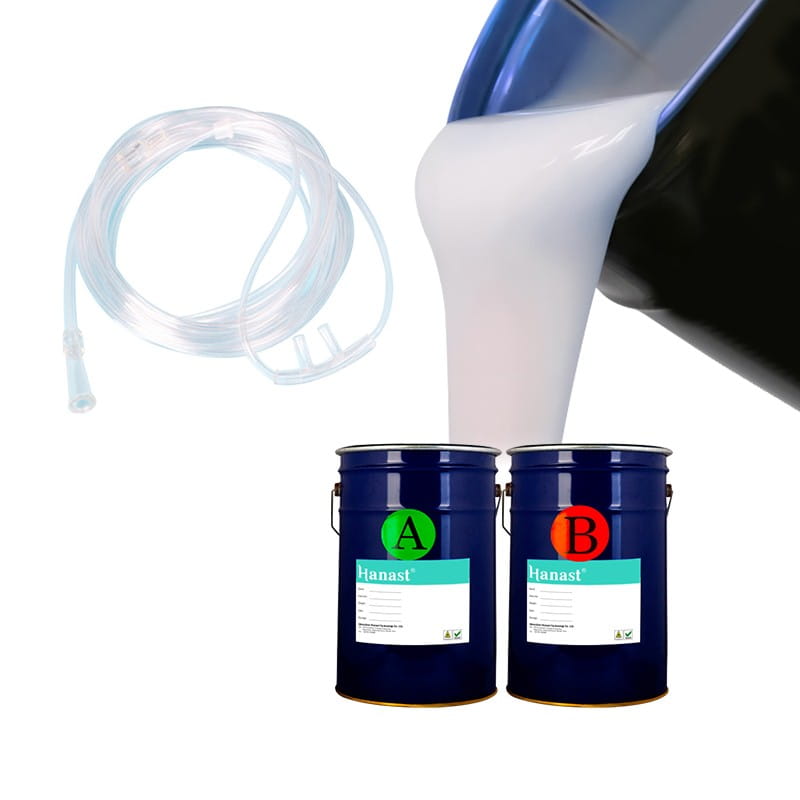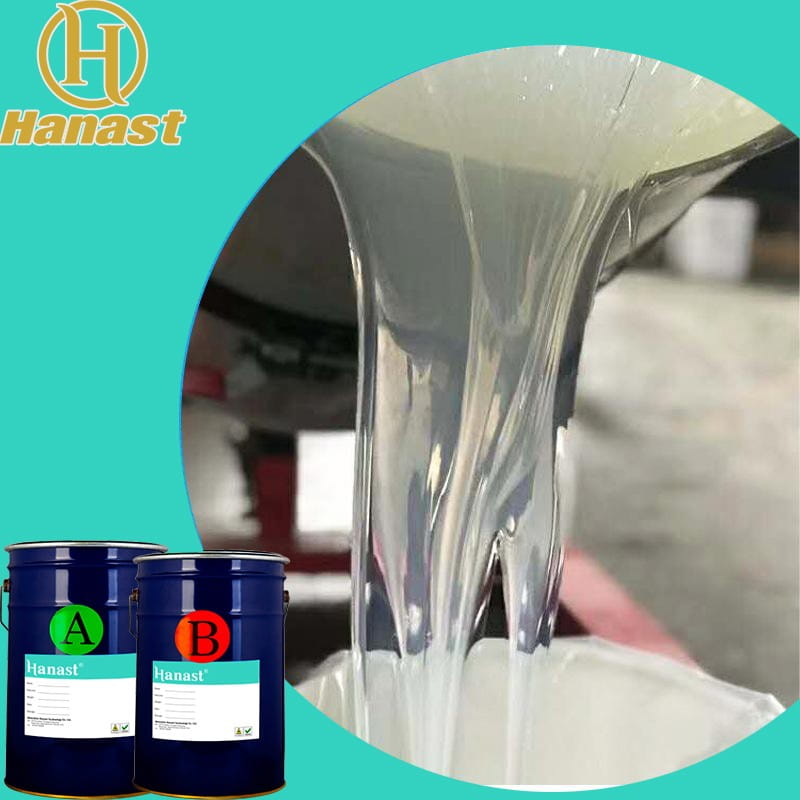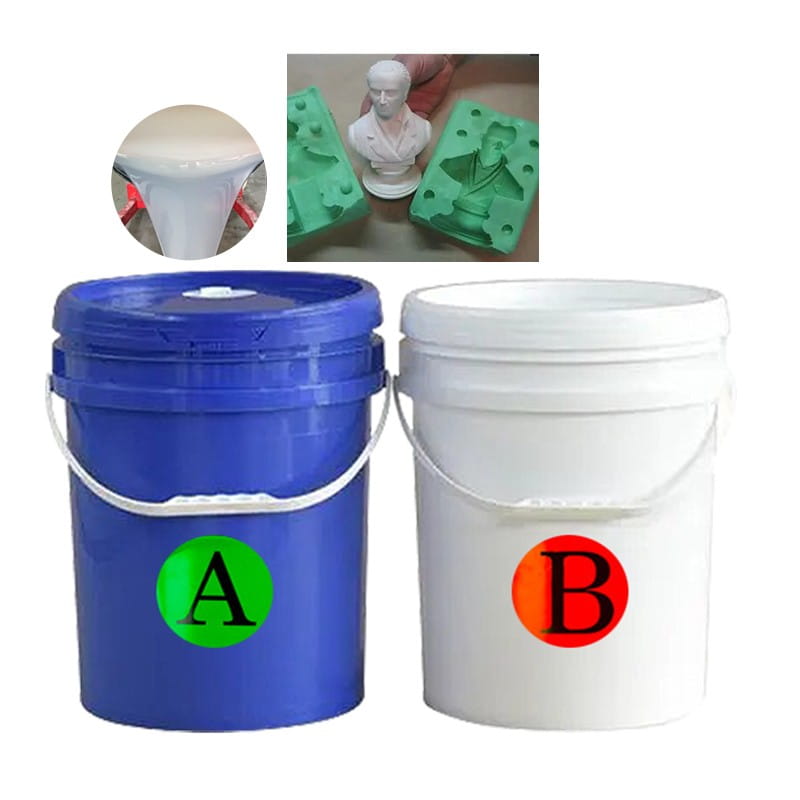Introduction to room temperature vulcanized silicone rubber (RTV)
 Apr 27,2023
Apr 27,2023

 Hanast
Hanast
Room temperature vulcanization silicone rubber (RTV) generally includes two types: condensation type and addition type.
The addition-type room temperature adhesive is based on linear polysiloxane with vinyl groups, and uses hydrogen-containing siloxane as a crosslinking agent. In the presence of a catalyst, a crosslinking reaction occurs at room temperature to medium temperature to become an elastomer. It has good heat resistance, hydrophobicity, and electrical insulation. At the same time, due to the introduction of active end groups, it has excellent physical and mechanical properties, especially in tensile strength, relative elongation and tear strength. improvement.
It is suitable for a variety of vulcanization methods, such as radiation vulcanization, peroxide vulcanization and addition vulcanization, and is widely used in heat resistance, moisture resistance, electrical insulation, high-strength silicone rubber products, etc.
Condensed room temperature vulcanized silicone rubber is characterized by the condensation reaction between silanol and other active substances. It can be cross-linked into elastomer silicone rubber at room temperature. The product is divided into one-component packaging and two-component packaging. form.
One-component room temperature vulcanizing silicone rubber (referred to as RTV-1 rubber) is one of the main products of condensation liquid silicone rubber. It is usually formulated from base polymers, crosslinking agents, catalysts, fillers and additives. The product is packaged in a sealed hose, squeezed out during use, and can vulcanize into an elastic body by itself after contact with air, which is extremely convenient to use. Vulcanized rubber can be used for a long time in the temperature range of (-60~+200℃), has excellent electrical insulation performance and chemical stability, can resist water, ozone, and weather aging, and has good adhesion to various metal and non-metal materials. connection. It is mainly used for coating of various electronic components and electrical equipment. The encapsulation material plays the role of insulation, moisture-proof and shock-proof; it is used as the surface protection material of semiconductor devices; it can also be used as sealing filler and elastic adhesive, etc.
Two-component room temperature vulcanizing silicone rubber (referred to as RTV-2 rubber) is not as convenient to use as RTV-1 rubber, but its component ratio is full of changes. One variety can get vulcanized products with various specifications and properties, and it can also be deeply vulcanized. Therefore, it is widely used in electronic appliances, automobiles, machinery, construction, textiles, chemicals, light industry, printing and other industries as insulation, packaging, caulking, sealing, moisture-proof, earthquake-resistant and roller materials. In addition, because RTV-2 has excellent mold release properties, it is widely used as a soft mold material for the reproduction and manufacture of cultural relics, handicrafts, toys, electronic appliances, and mechanical parts. One of the typical applications of silicone sealant is glass curtain wall. The glass and the aluminum alloy frame are bonded with silicone structural adhesive as the exterior wall material, and the expansion joints are sealed waterproofly with silicone weather-resistant adhesive. Other applications include the peripheral sealing of aluminum alloy doors and windows and plastic steel doors and windows, the sealing of glass installation and moving grooves, the sealing of rivets and fixing screws: sanitary ware in kitchens, bathrooms, and toilets, and between countertops, walls, and furniture. Waterproof sealing between aquariums, ceilings, metal roofs, windows, counters, wall panels, color steel plates; waterproof caulking between high-grade road plates, etc.
In addition to sealants for construction, RTV also includes sealing materials for aerospace, nuclear power plants, electronics, machinery, automobiles and other industries, silicone potting materials for electronic component potting, and silicone for soft mold materials Mold glue, etc. These varieties are relatively infrequent in demand, but are indispensable on many occasions.




 Home
Home



 Cake Chocolate Mold Silicone - Product Introduction
Cake Chocolate Mold Silicone - Product Introduction  You May Also Like
You May Also Like







 Tel
Tel
 Email
Email
 Address
Address












